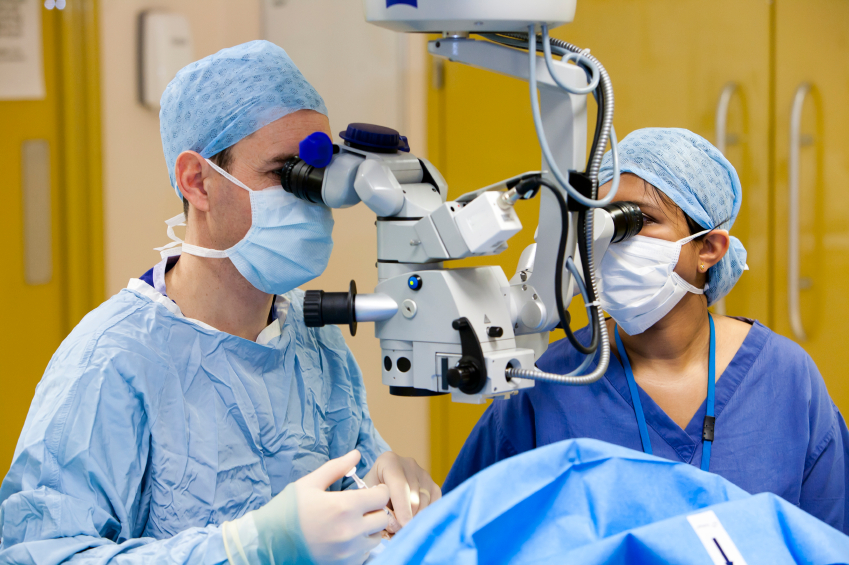Introduction
Laser eye surgery has transformed millions of lives by giving people the freedom to see clearly without glasses or contact lenses. Yet, despite its popularity, several myths and misconceptions still surround the procedure. From fears of blindness to recovery concerns, misinformation often prevents people from experiencing the benefits of modern vision correction.
In this article, we’ll separate fact from fiction and share expert insights to help you make an informed decision about laser eye surgery in 2025.
See more: Things you need to know before, during, and after cataract surgery
What Is Laser Eye Surgery?
Laser eye surgery is a precise medical procedure that reshapes the cornea — the clear front part of your eye — to improve how light focuses on the retina. This correction can significantly reduce or even eliminate the need for glasses or contact lenses.
The Main Types of Laser Eye Surgery
- LASIK (Laser-Assisted In Situ Keratomileusis) — the most common procedure where a thin corneal flap is created and reshaped using a laser.
- PRK (Photorefractive Keratectomy) — suitable for those with thinner corneas, this method removes the cornea’s surface layer, which regenerates naturally.
- SMILE (Small Incision Lenticule Extraction) — a newer, minimally invasive technique using a small incision to reshape the cornea.
Each method has its own advantages, and your ophthalmologist will recommend the best one based on your eye health and vision needs.
Myth #1: Laser Eye Surgery Is Painful
Truth: The procedure is virtually painless.
Before the surgery, numbing eye drops are applied to ensure you feel no discomfort. Patients may experience mild pressure or a slight sensation during the process, but not pain. Afterward, some people report temporary dryness or mild irritation, which usually subsides within a few days.
Myth #2: Laser Eye Surgery Can Cause Blindness
Truth: Permanent blindness from laser eye surgery is extremely rare.
Advanced technology and experienced surgeons make the risk negligible. Complications can occur, but they are often minor and treatable. Regular follow-ups and adhering to aftercare instructions further minimize risks.
Myth #3: The Results Don’t Last Forever
Truth: Results are long-lasting for most patients.
Once the cornea is reshaped, it generally remains stable. However, natural age-related vision changes, such as presbyopia, can occur later in life — just as they do in people who have never had surgery. Touch-up procedures are sometimes an option to fine-tune results.
Myth #4: Only Young People Can Have Laser Eye Surgery
Truth: Age alone doesn’t determine eligibility.
While most patients are between 18 and 45, older adults with healthy eyes can also benefit. The key factors are corneal thickness, eye stability, and overall eye health — not age.

Myth #5: Recovery Takes Months
Truth: Recovery is quicker than most expect.
With LASIK, many patients notice improved vision within 24 hours. PRK and SMILE procedures might take slightly longer for full clarity, but overall, recovery time is measured in days — not months.
Myth #6: Laser Eye Surgery Is Too Risky
Truth: The success rate is over 95%.
Modern laser eye treatment technology, advanced diagnostics, and surgeon experience make the procedure exceptionally safe. In fact, the risks of infection or complications are lower than those associated with contact lens overuse.
Benefits of Laser Eye Surgery
- Clear vision without dependence on glasses or contacts
- Long-term cost savings
- Quick recovery and minimal downtime
- High safety and satisfaction rates
- Improved confidence and lifestyle convenience
Potential Risks and Side Effects
While rare, possible side effects include:
- Temporary dryness or glare
- Light sensitivity
- Over- or under-correction (usually correctable with enhancement surgery)
Always choose a qualified ophthalmologist to minimize risks and ensure optimal results.
Laser Eye Surgery Cost in 2025
In 2025, laser eye surgery costs in Australia and similar markets typically range from $2,000 to $4,500 per eye, depending on the procedure, surgeon expertise, and technology used. Many clinics now offer flexible payment options, making it more accessible than ever.
Post-Surgery Care and Long-Term Results
- Avoid rubbing your eyes for a few weeks
- Use prescribed eye drops to prevent dryness
- Attend follow-up appointments as scheduled
- Protect your eyes from dust and UV rays
With proper care, patients can enjoy stable vision for decades after the surgery.
Conclusion
Don’t let outdated myths stop you from seeing the world clearly. Laser eye surgery is one of the safest and most effective medical innovations in vision correction. Always consult a certified ophthalmologist, discuss your options, and make an informed choice that aligns with your lifestyle and vision goals.
FAQS
Recovery varies by procedure, but most LASIK patients see clearly within 24 hours. PRK or SMILE patients might take a few extra days for full clarity. Normal activities can often resume within a week.
Temporary dryness, glare, or halos at night are common but usually fade in a few weeks. Serious complications are rare when performed by experienced surgeons using modern technology.
Ideal candidates are over 18, have a stable prescription, healthy corneas, and no severe eye diseases. A detailed pre-surgery eye exam determines eligibility.
Most patients enjoy permanent vision correction. However, age-related changes like presbyopia (reading vision decline) may occur later and are unrelated to the surgery itself.



